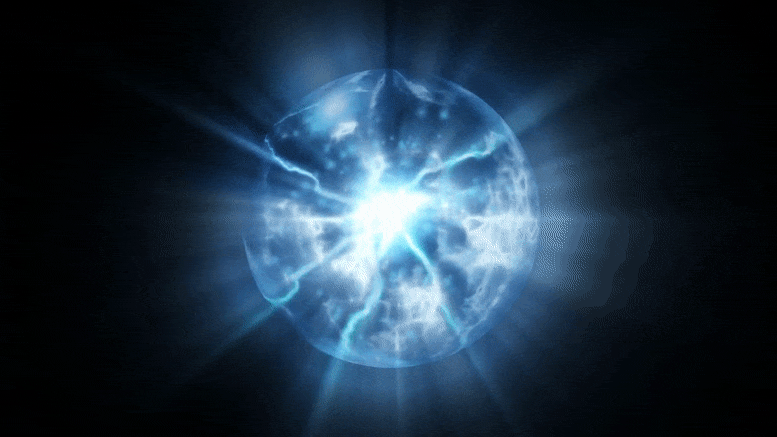
Energy Plasma Concept
What Are High Energy Density Laboratory Plasmas?
High energy density (HED) laboratory plasmas are perhaps the most extreme states of matter ever produced on Earth. Normal plasmas are one of the four basic states of matter, along with solid, gases, and liquids. But HED plasmas have properties not found in normal plasmas under ordinary conditions. For example, matter in this state may simultaneously behave as a solid and a gas. In this state, materials that normally act as insulators for electrical charges instead become conductive metals. To create and study HED plasmas, scientists compress materials in solid or liquid form or bombard them with high energy particles or photons.
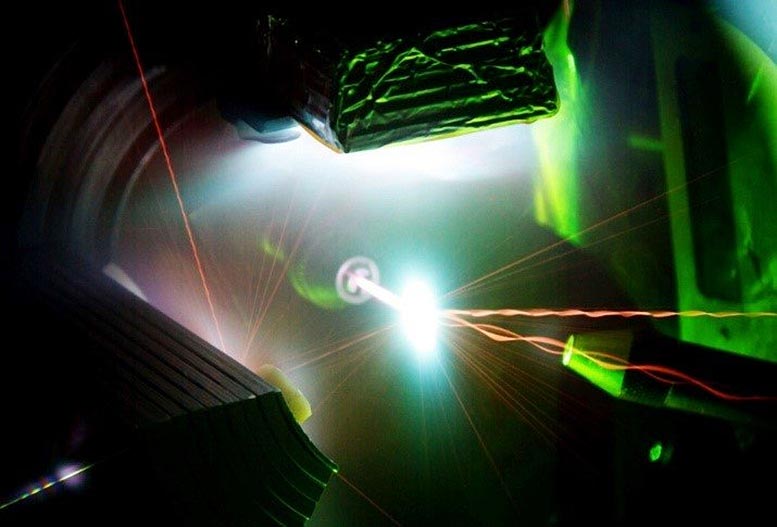
Invisible infrared light from the 200-trillion-watt Trident Laser enters from the bottom to interact with a one-micrometer thick foil target in the center of the photo, generating a high energy density plasma. Credit: Image courtesy of Joseph Cowan and Kirk Flippo, Los Alamos National Laboratory
Scientists’ ability to create and control extreme conditions in laboratories on Earth helps us understand black holes and other events in the universe. This research also supports efforts to make fusion power a reality on Earth, harnessing the processes that happen within the Sun to produce energy here. Scientists working with HED plasmas address the basic laws of nature. But they also work on practical applications; research on HED plasmas can help us understand how to make radioactive isotopes. These radioisotopes have many practical applications. For example, they can be used to create images of the inside of our bodies for understanding medical issues, or in industry for understanding how materials wear out with use.
High Energy Density Plasma Facts
- High energy density plasmas are an exotic state of matter found in astrophysical events such as the birth of stars and brown dwarfs, in laboratory fusion experiments, and in nuclear weapons explosions.
- Scientists generate HED plasmas using high-power petawatt-class lasers, which generate instantaneous power levels equivalent to the output of the entire U.S. electrical grid.
- HED plasmas are created in the National Ignition Facility (NIF), which is the most energetic laser in the world with 2 megajoules (the energy consumed by 20,000 100-watt light bulbs in one second) of light energy delivered in 16 nanoseconds.
- Applications enabled by HED plasmas in the form of compact, inexpensive sources of radiation have applications in science, industry, and medicine.
- Using NIF’s 192 lasers at a target of hydrogen isotopes has been compared to throwing a baseball from the pitcher’s mound at San Francisco’s Oracle Park into the strike zone at Dodger Stadium in Los Angeles, some 400 miles (640 kilometers) away.
DOE Office of Science: Contributions to High Energy Density Laboratory Plasmas
The Department of Energy supports HED research and development because the associated applications address several DOE missions. Support for HED plasma research originated with the U.S. nuclear weapons program. Following the invention of the laser, HED research expanded beyond nuclear weapons. The United States manages HED activities under DOE’s National Nuclear Security Administration (NNSA) and the Fusion Energy Sciences program in the DOE Office of Science. The Office of Science focuses on developing the scientific basis for understanding and producing HED plasmas.





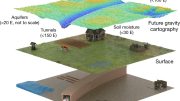
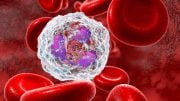
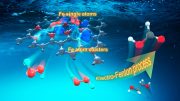

“throwing a baseball…”
Or firing one with a highly calibrated rifle through a vacuum, which, though difficult, is significantly less impossible.